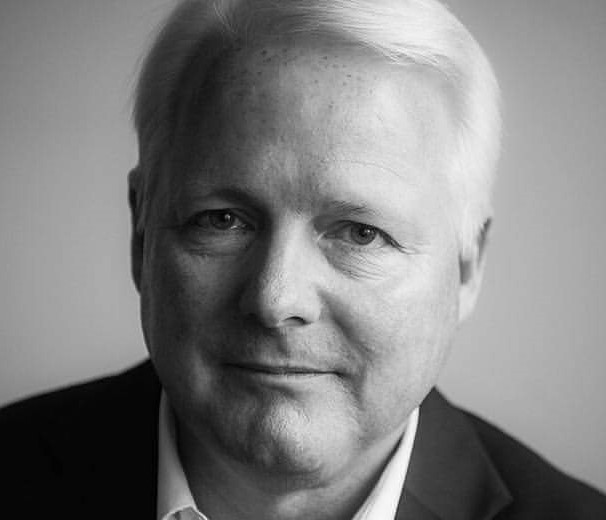For decades, the standard practice for disposing of excreted chemotherapy drugs (in urine, feces, vomit, and sweat) has been incineration. The assumption was simple: burn it and it's gone. Yet, as Jim Mullowney, founder of Pharma-Cycle, has spent years pointing out, "gone" is not the same as safe. "When you burn cytotoxic drugs, used in chemotherapy, they don't disappear," he explains. "They break down into other toxic chemicals, things like mustard gas and phosgene, that go straight into the air we breathe and wash away into our water systems."

It's a problem that stretches far beyond the walls of hospitals. From cancer drugs flushed into wastewater to the limited oversight of at-home treatment waste, the current system leaves communities exposed. Mullowney has been sounding the alarm for years, campaigning to shut down medical incinerators and advocating for a new approach. "I personally pushed to shut down many medical waste incinerators in the country," he says. "Because the science is clear, they don't solve the problem, they just spread it."
Pharma-Cycle was built as the alternative. Rather than relying on heat to destroy hazardous drugs, the company uses what Mullowney calls "fighting chemistry with chemistry." Its patented system neutralizes cytotoxic drugs through a controlled alkaline reduction process. Once neutralized, the waste is encapsulated in a hardened, sealed form that can be safely disposed of in landfills without risk of leaching or exposure. "You can't destroy these chemicals by fire, and you can't just dilute them in water," Mullowney explains. "You have to chemically neutralize them and then lock them away forever."
This approach may sound novel, but it builds on lessons learned from chemical weapons disposal. In fact, the regulatory bodies themselves abandoned incineration in favor of chemical neutralization decades ago, when they realized burning stockpiled weapons only spread toxic byproducts. Mullowney draws a direct parallel: "Whether it's a chemical weapon or a chemotherapy drug, the chemistry is the same. Both are designed to alter human DNA. And if you don't neutralize them properly, you are releasing that danger back into the environment."
The urgency of this problem is hard to overstate. Cytotoxic drugs, many of them essential for cancer treatment, are among the most dangerous chemicals ever developed. Even trace amounts can have severe biological effects. "These compounds act like a chemical virus," Mullowney warns. "It's not about the dose. If you get exposed, even at a molecular level, the consequences can be devastating."
Research has linked healthcare worker exposure to increased birth defects, childhood illnesses, and erectile dysfunction, and Mullowney argues that risks extend to families when patients return home with these drugs still active in their systems.
The risks are recognized within healthcare settings, but many gaps leave home environments unprotected, with much of this waste still going down the toilet. In Europe, efforts to tighten controls on excreted chemotherapy have been underway for years, but as Mullowney points out, the practical reality remains the same: "Most of it still goes down the toilet or into a medical incinerator. And that means it's still ending up in the air."
Pharma-Cycle's model is designed to close this gap. The company provides disposal kits that capture waste at the point of use, whether in a hospital or a home. The drugs are neutralized immediately and then sealed, ensuring they can never re-enter circulation. "Once that container is closed, no one ever touches it again," says Mullowney. "It's not burned, it's not diluted, it's neutralized and secured."
What sets Pharma-Cycle apart is that it doesn't stop at neutralization. Encapsulation ensures that, even over time, the materials cannot leach into soil or water. "It's not just about destroying the active chemistry," Mullowney says. "It's about sequestration. The generator has to take responsibility for the damage that is done. That liability will remain decades from now."
For Mullowney, the work has become more than a business mission. It's personal. Inspired by watching his own mother go through cancer treatment, he has spent decades trying to bridge the gap between medicine that saves lives and the impact that it has on families and societies. "Twenty years ago, maybe I wanted to be rich," he reflects. "But now, it's about protecting my daughter's generation. This is not just about pollution, it's about public health, about birth defects, about the future of our children."
The challenge is convincing a healthcare system used to incineration that it's time to move on. That shift is beginning, particularly in Europe, but Mullowney believes the conversation needs to accelerate. "We have known for a long time that burning doesn't work. The evidence is there. Now it's time to face it and adopt solutions that actually protect people."
Pharma-Cycle's patented process shows that there is a better way, one that neutralizes rather than disperses, and one that secures waste rather than pretending it has vanished. It's a message Mullowney is determined to spread, because as he puts it, "This problem is solvable. We just need the will to solve it."
© 2025 ScienceTimes.com All rights reserved. Do not reproduce without permission. The window to the world of Science Times.










